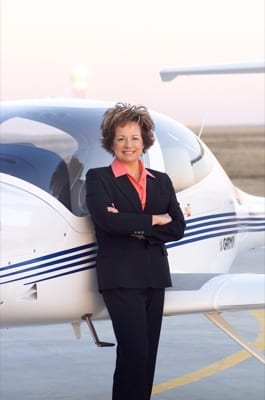GUEST EDITORIAL By PAULA DERKS, president, Aircraft Electronics Association
My son graduates from college in December. His father and I could not be happier. Of course, we are proud he is obtaining a college degree, but I must admit we are more than a little thrilled that it means no more tuition payments, no more books to be purchased, no more room-and-board expenses to be paid to the university, and no more extracurricular dues and fees, which seem to crop up every semester.
 What his graduation doesn’t mean, however, is that he can stop studying and learning. We always have told both our son and daughter that graduation from college doesn’t mean a hall pass to closing your mind to continuous learning. Our mantra to them was: If you are to be a wise and productive citizen, you will have a quest to keep learning and exploring until the day you die.
What his graduation doesn’t mean, however, is that he can stop studying and learning. We always have told both our son and daughter that graduation from college doesn’t mean a hall pass to closing your mind to continuous learning. Our mantra to them was: If you are to be a wise and productive citizen, you will have a quest to keep learning and exploring until the day you die.
Right now, our son is not too interested in our mantra; he simply wants to get through his senior capstone project, get a diploma in hand, and go snow skiing with his buddies as his last big hurrah before his “real world” job awaits him in January.
Most of us in the general aviation industry, however, abide by this very discipline of continuing education. Whether we fly for fun, or for a job, or whether we manufacture, install and maintain the equipment helping propel us into the air, we all make the commitment to continue to learn about the world of aviation.
As new and exciting avionics technologies make their way into every type of GA cockpit, it means more learning challenges and opportunities — and not just for the pilot. As the president of the Aircraft Electronics Association, it’s exciting to offer our members — the avionics equipment manufacturers and distributors, as well as the government-certified repair stations, more commonly referred to as avionics shops — endless opportunities to receive continuous training on new, state-of-the-art avionics technologies.
As members of the AEA, thousands of avionics shop technicians around the globe can take advantage of the many classes, workshops and online training sessions we offer throughout the year. These courses are designed to train technicians on installing, integrating and maintaining the latest avionics systems. Through teaching and hands-on training, these highly skilled individuals learn how to troubleshoot, diagnose, install and repair these essential systems.
Not only are the majority of the AEA’s training programs recognized by the FAA, but our association also recognizes the technicians’ continuous educational accomplishments through our own training awards program, the annual “AEA Avionics Training Excellence” award. To be recognized with the award each year, AEA avionics shops must show proof that every one of their technicians has received some form of AEA-recognized training during the year.
Qualified training for the award can be attendance at AEA-sponsored workshops, seminars, the AEA annual convention, or AEA regional meetings. Our online training programs, available through the AEA website (AEA.net), also count toward the award. In addition, we recognize partner-provided training, such as classes through Global Jet Services.
Partly in response to the recent changes in the FAA’s Part 145 certified repair station regulations requiring continuous training, the AEA recently built a new headquarters office in Lee’s Summit, Mo., a suburb of Kansas City. The new offices feature a dedicated training classroom for avionics technicians: the Dan Derby Center for Professional Development. Since its inception 18 months ago, the Derby Center has hosted several avionics training classes, industry-specific training sessions, as well as business management topics, all designed with both the avionics shop and the equipment manufacturer in mind. We have opened our classroom doors to technicians from around the world.
Future plans for training classes in the new Derby Center include advanced avionics classes, manufacturer-specific product training for their dealers, and round table discussions on topics such as ADS-B implementation, safety management systems, human factors in aviation maintenance, hazardous materials handling, and import/export rules for avionics.
Of course, the AEA takes our show on the road throughout the year, traveling throughout the United States, Canada, Europe and the South Pacific, bringing technical training to our members in their own backyards. It is particularly gratifying to meet and witness technicians of all ages and backgrounds eager to learn new advancements in avionics systems.
While my son’s degree and career choice is not related to the aviation industry, I can only hope he will continue to have the same thirst for learning as the avionics professionals I have had the pleasure to meet.
Paula Derks is president of the Aircraft Electronics Association. To learn more about the AEA and its training programs, go to AEA.net.
